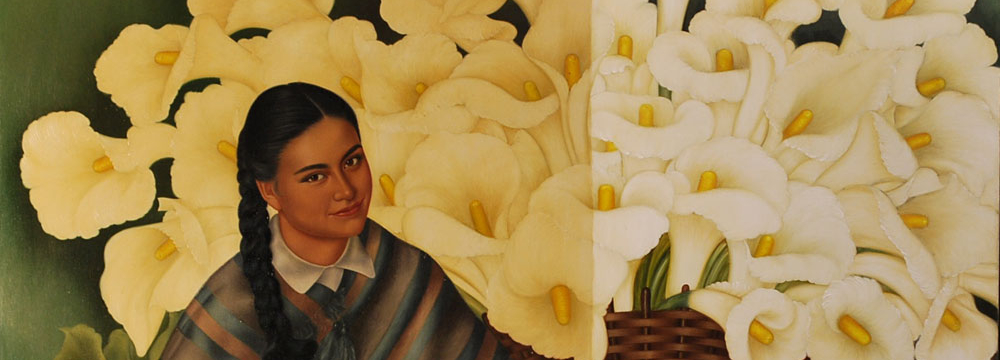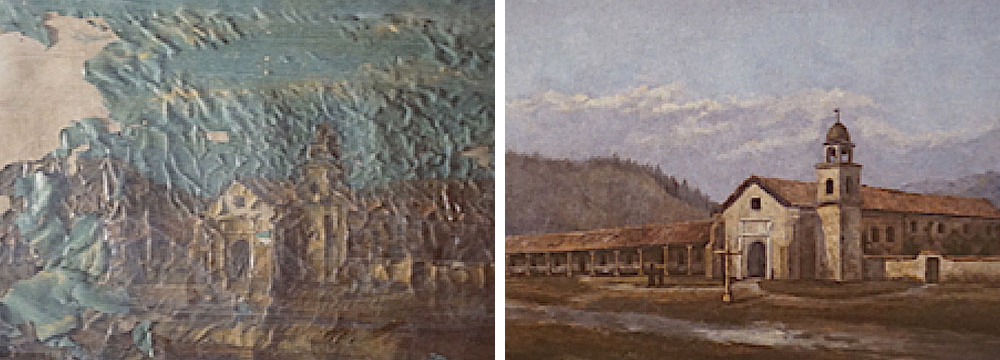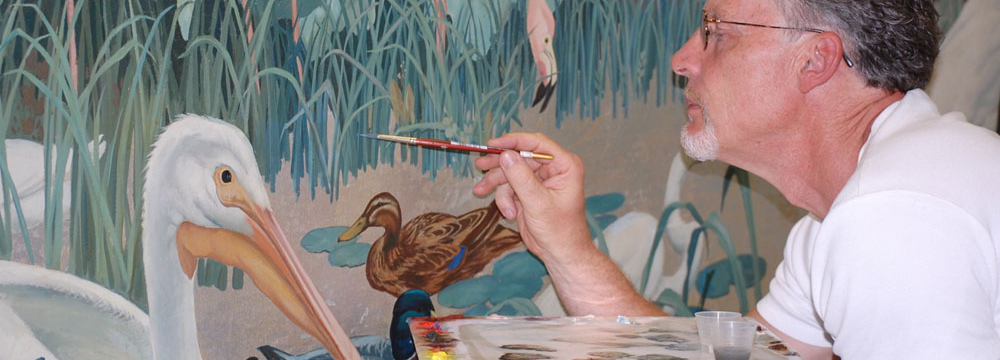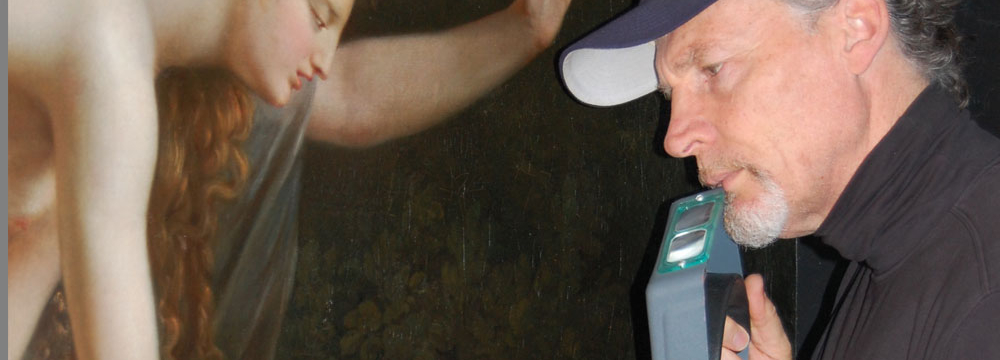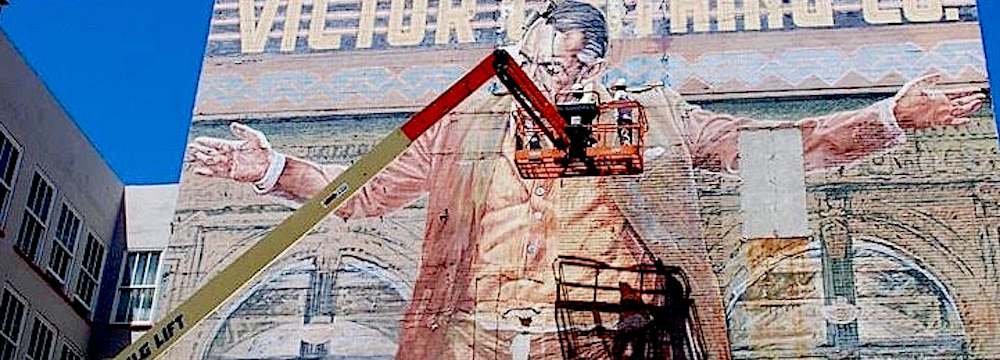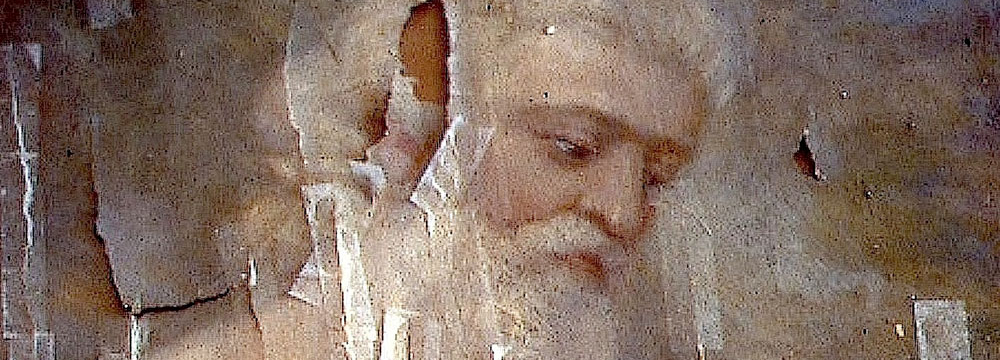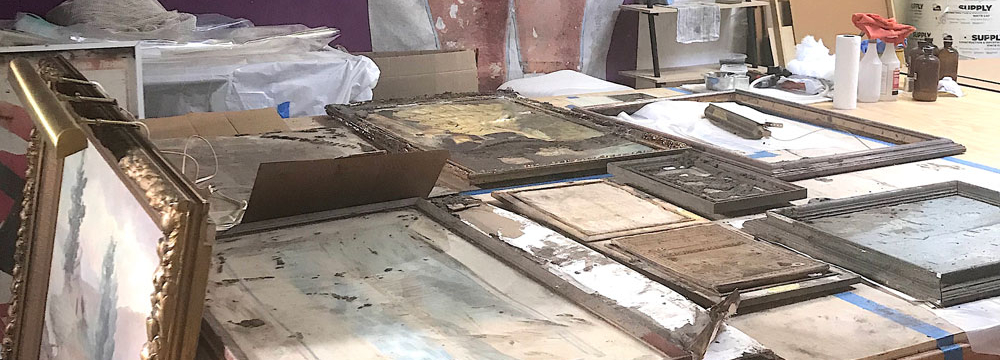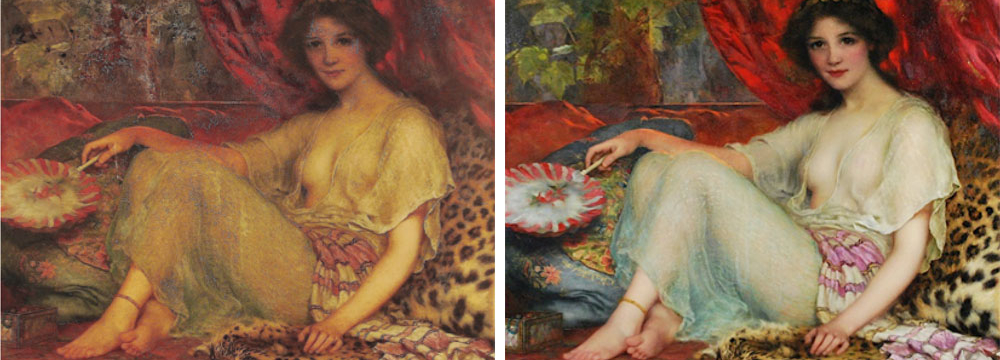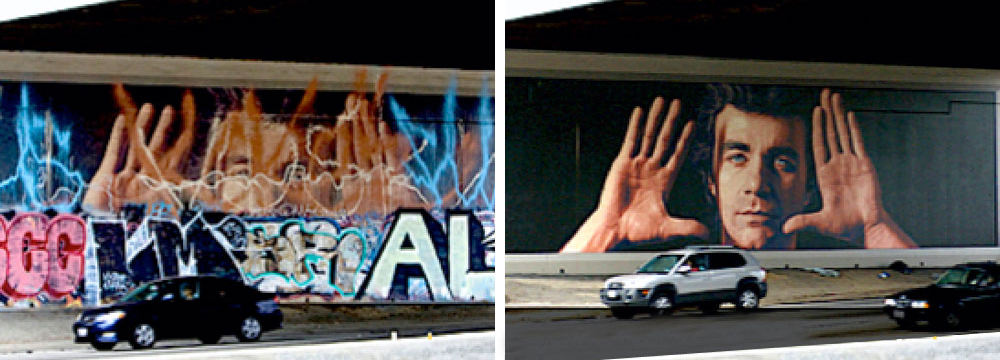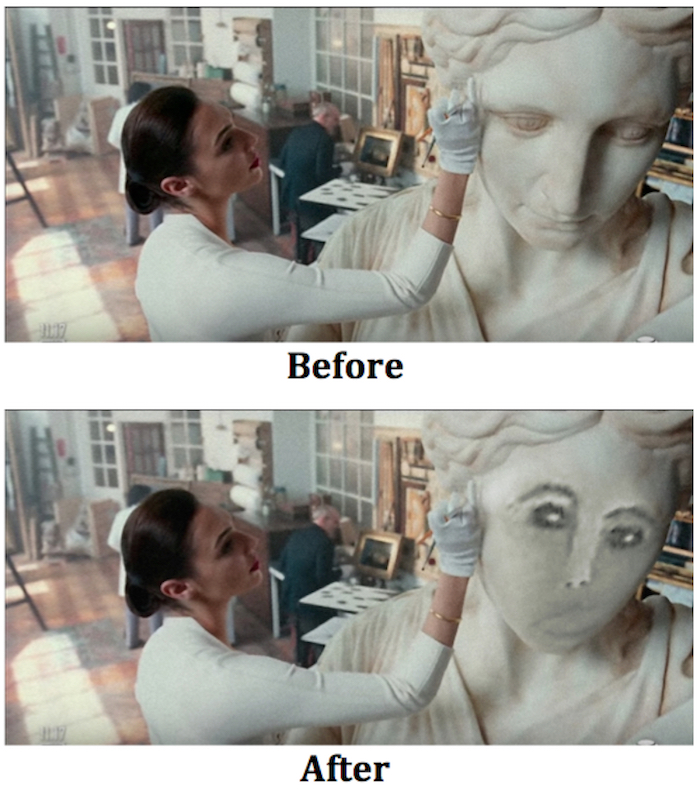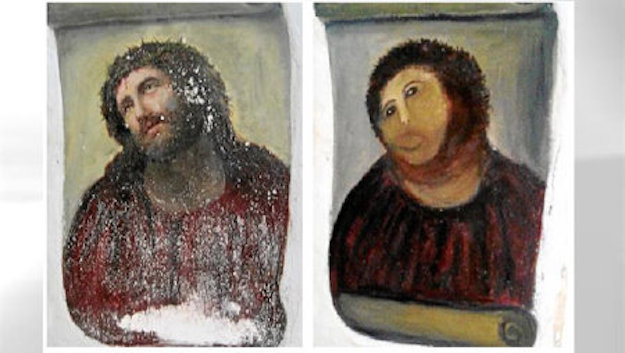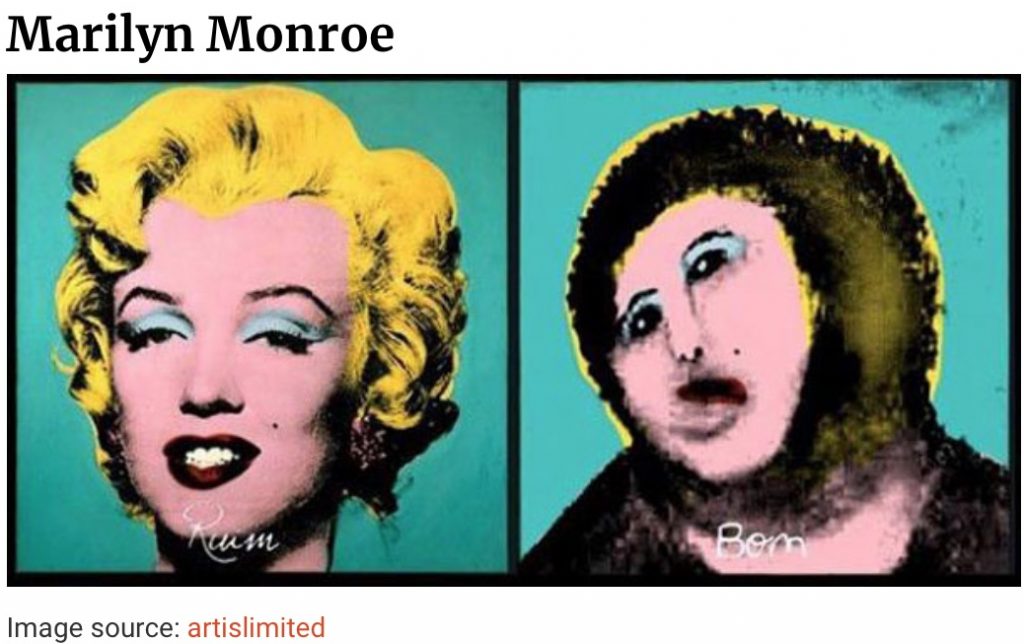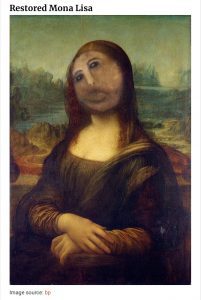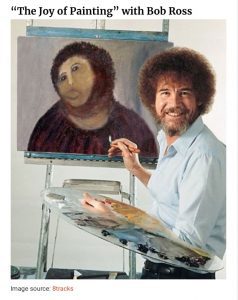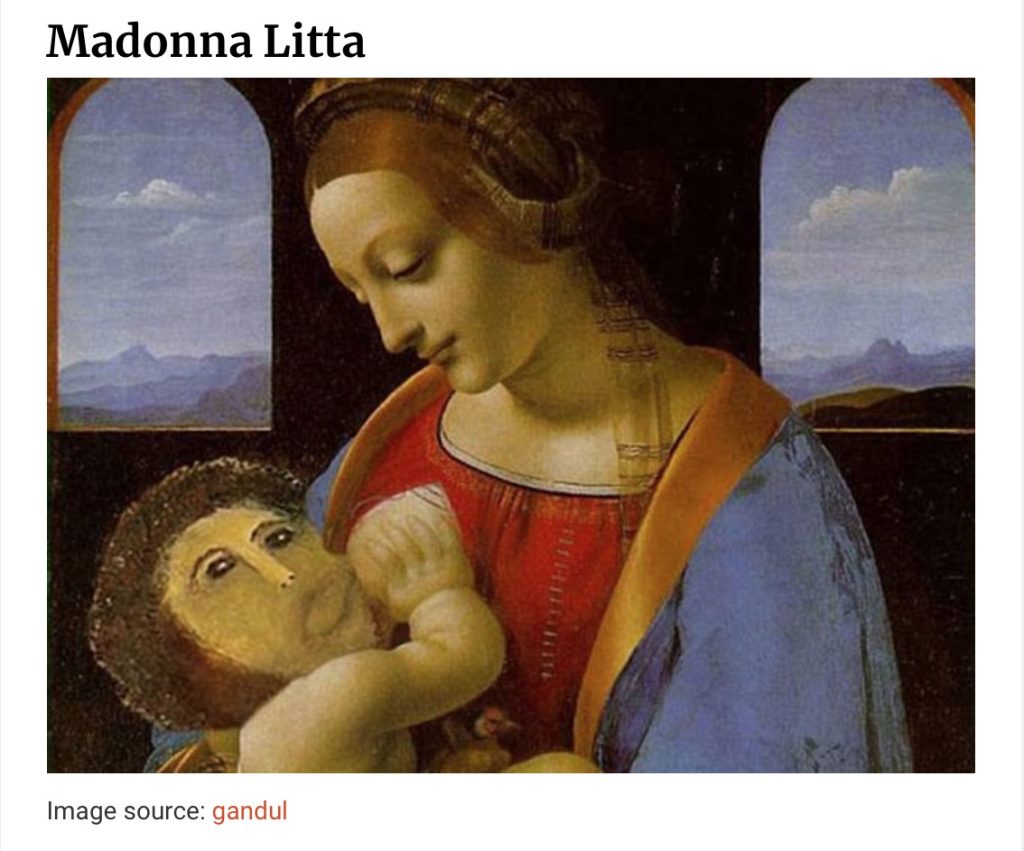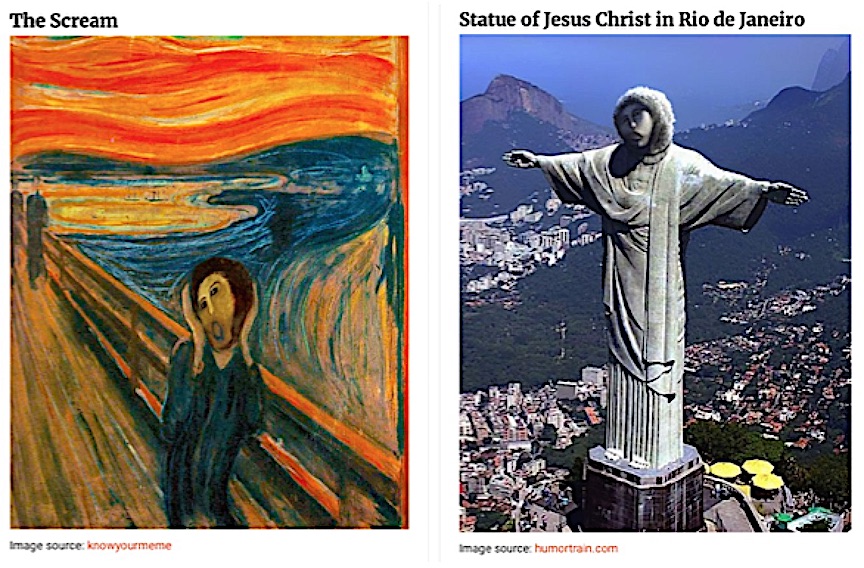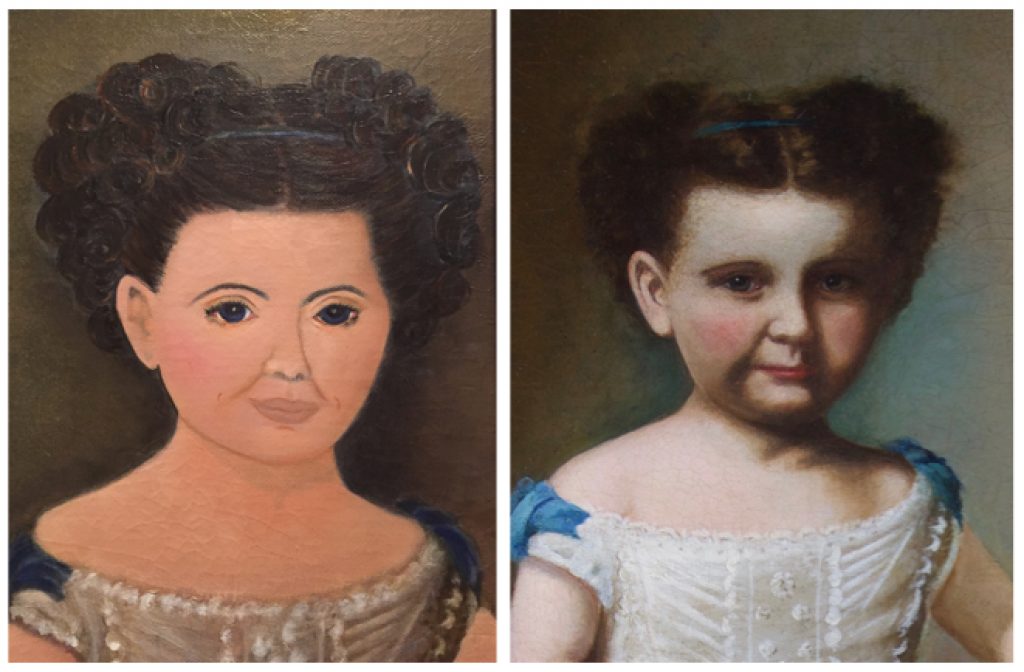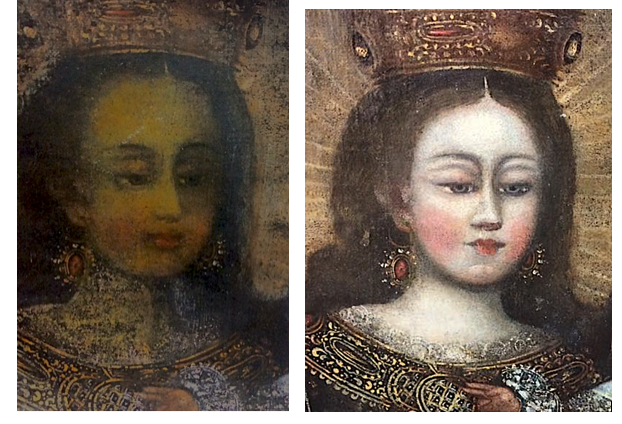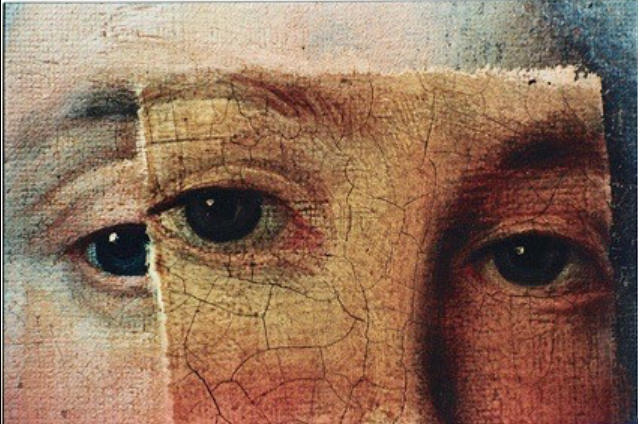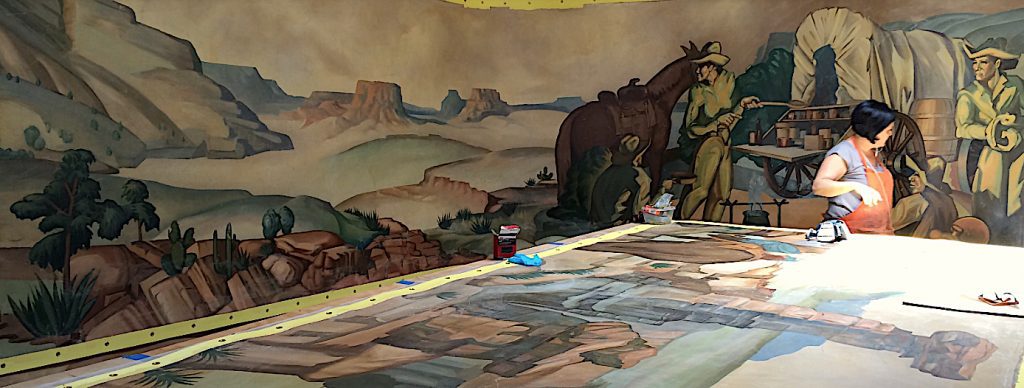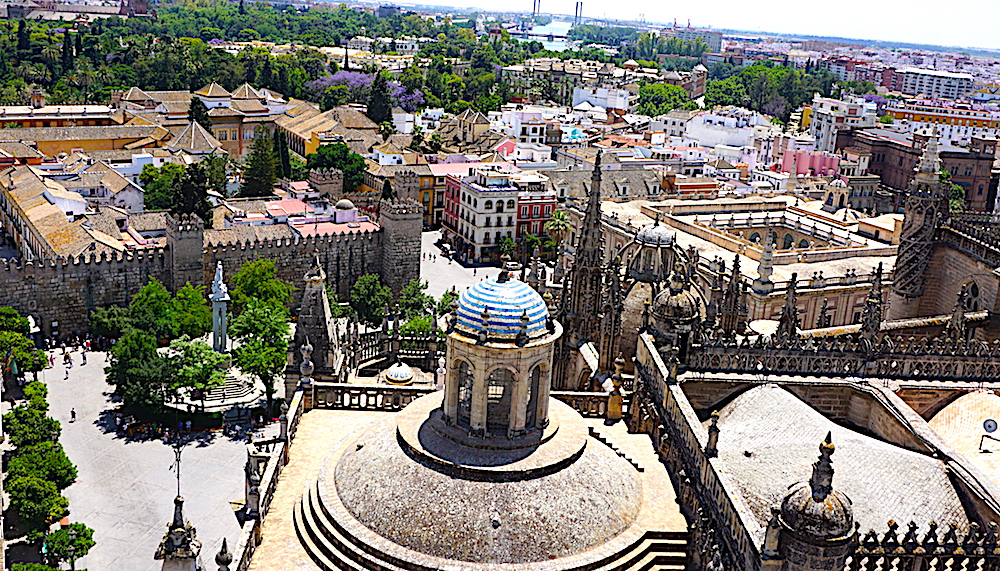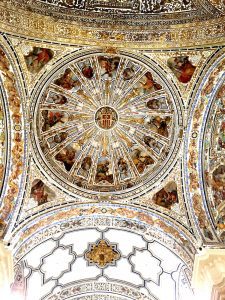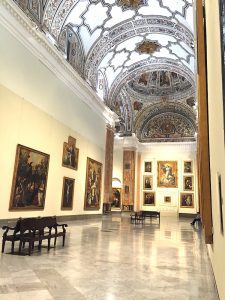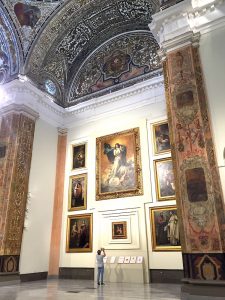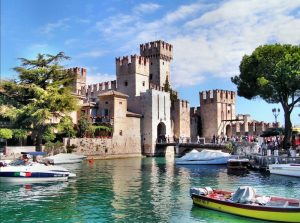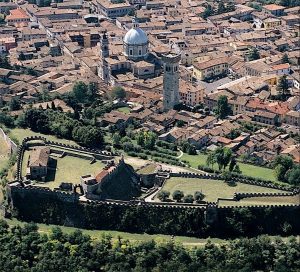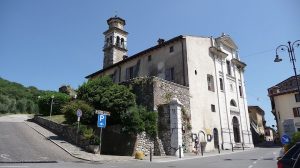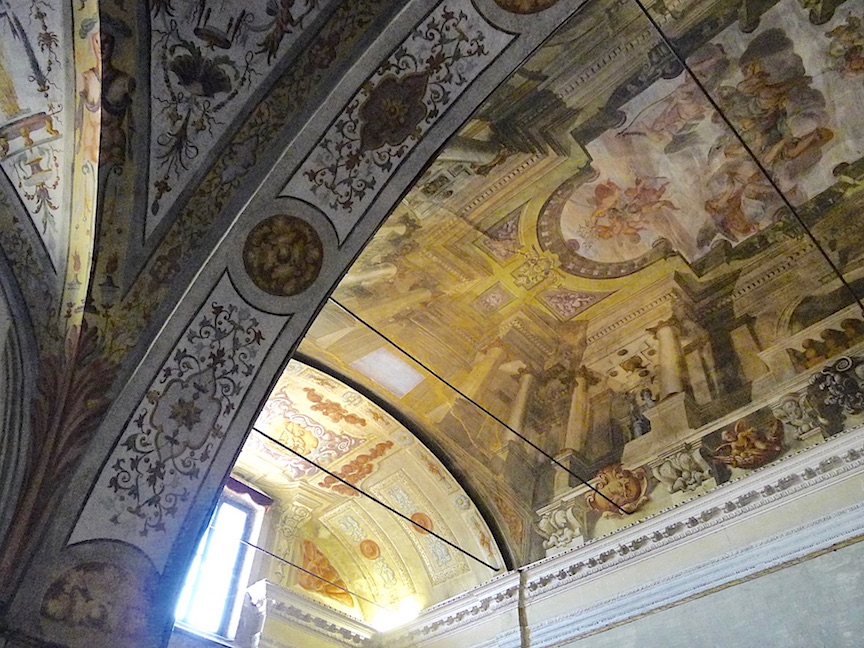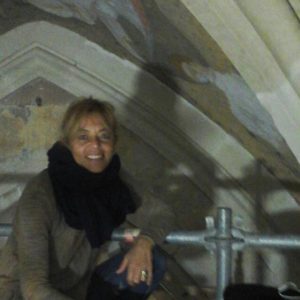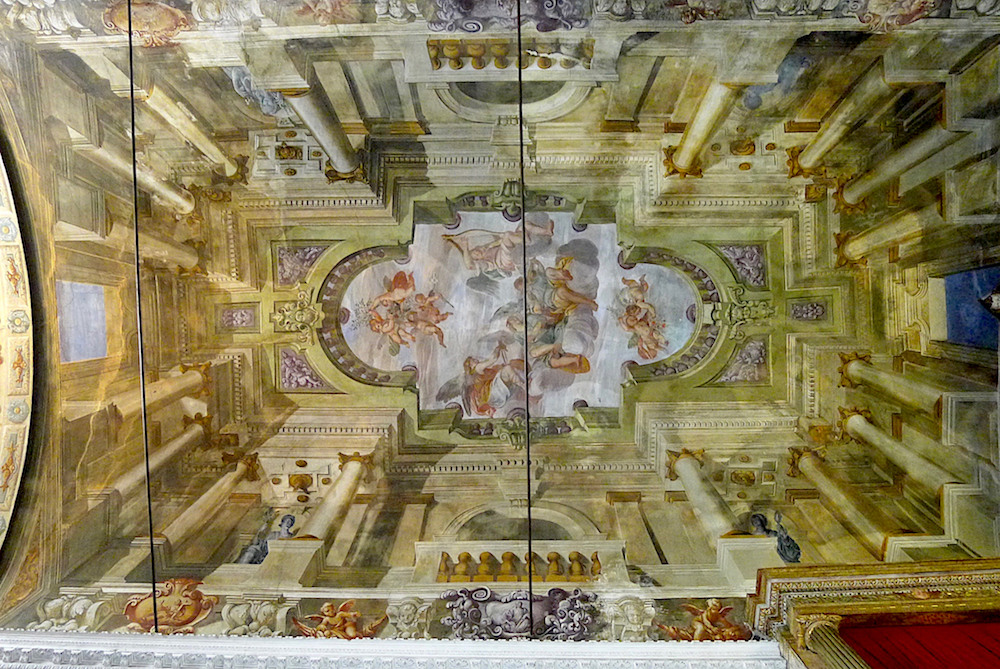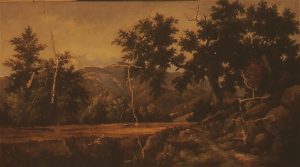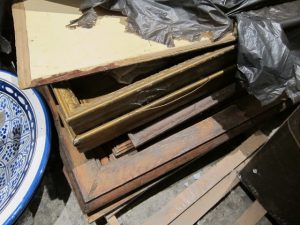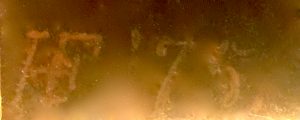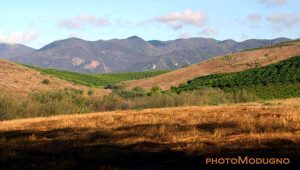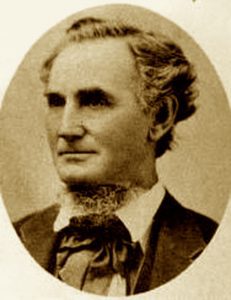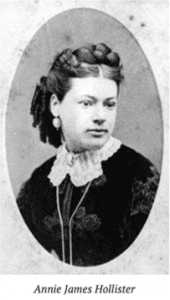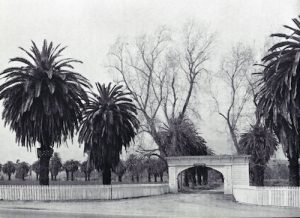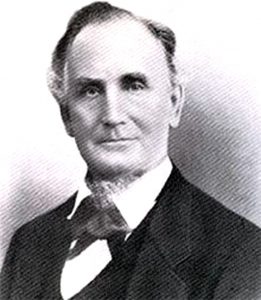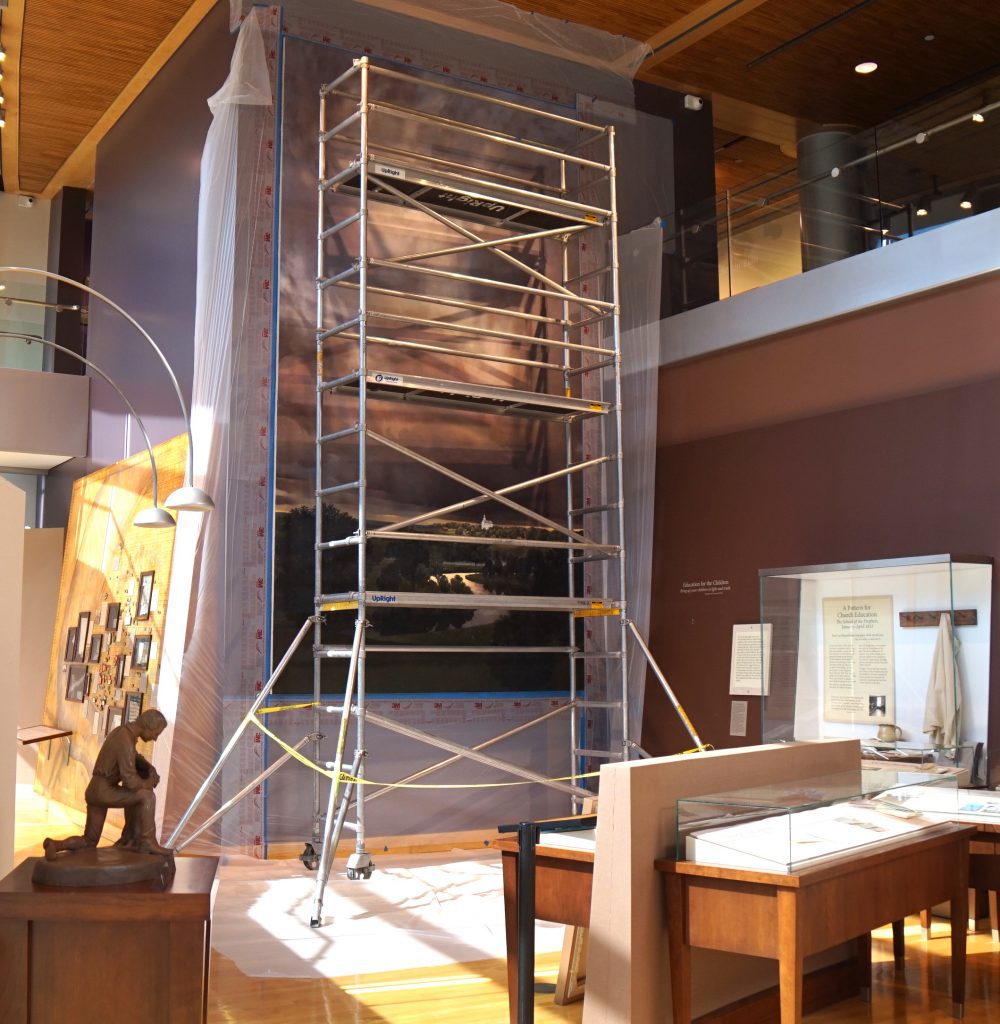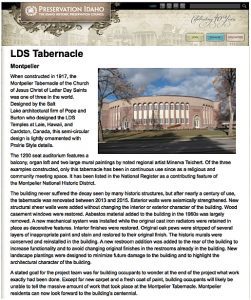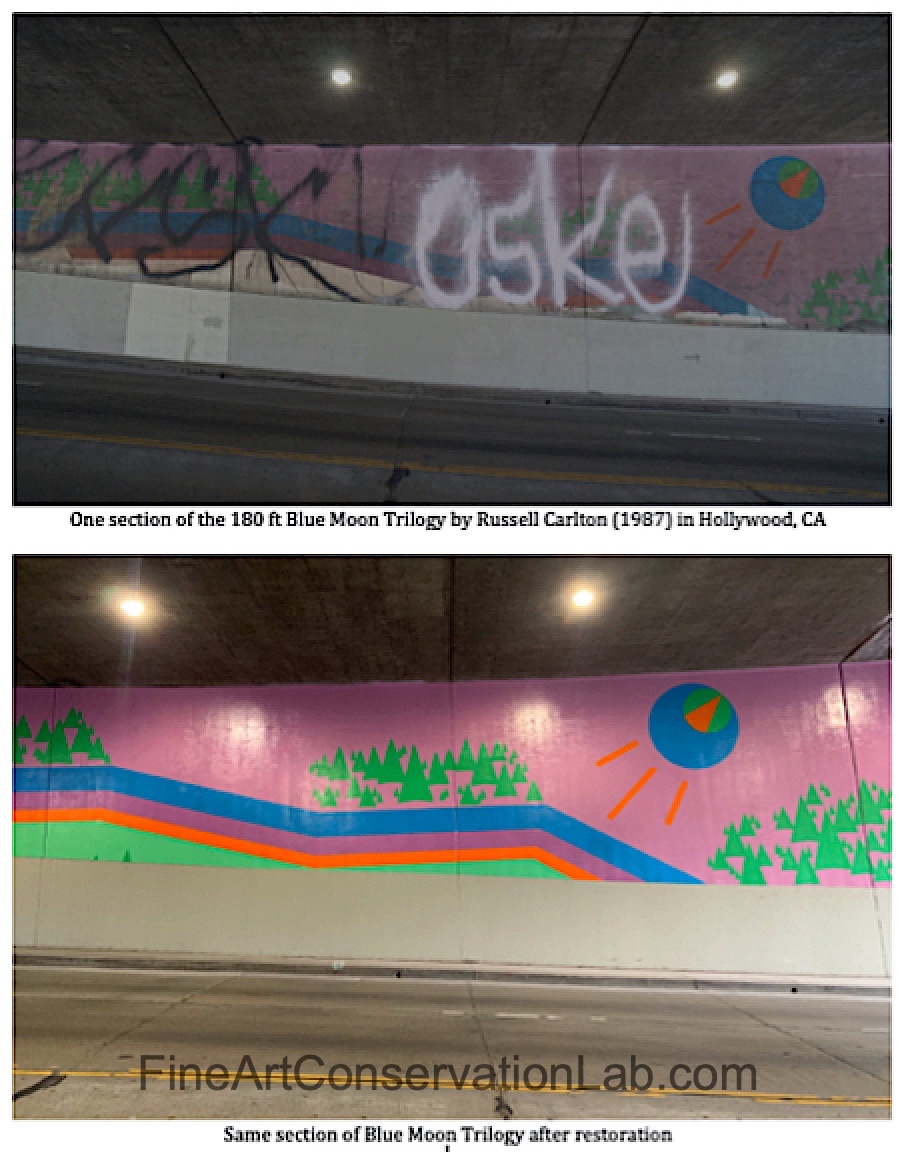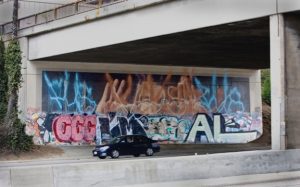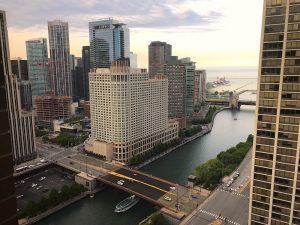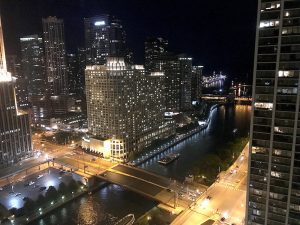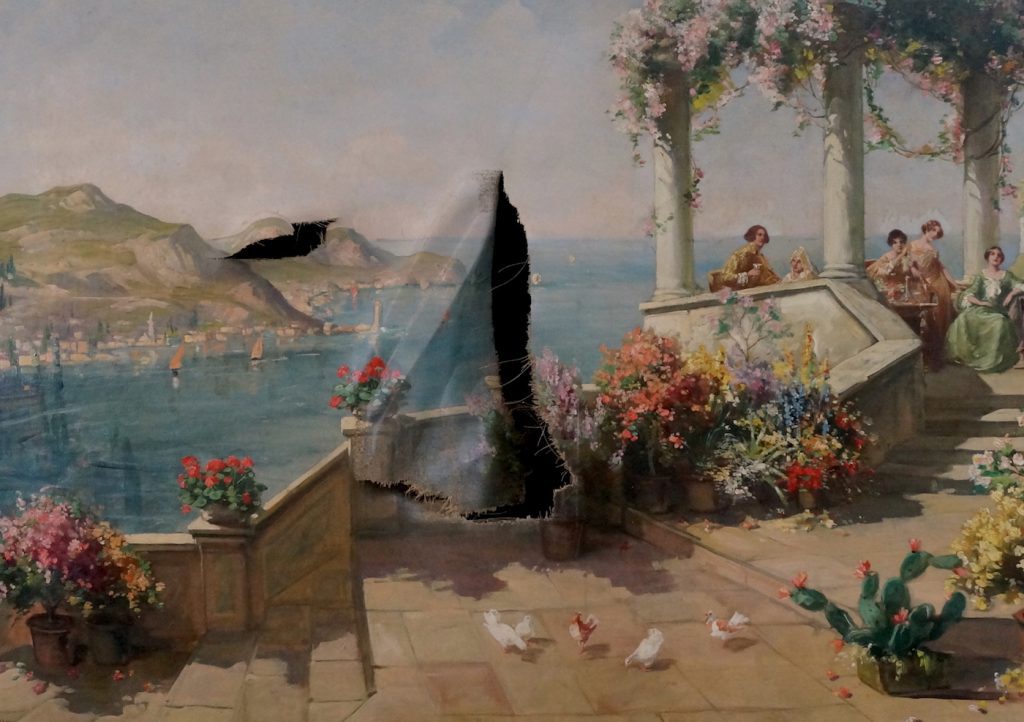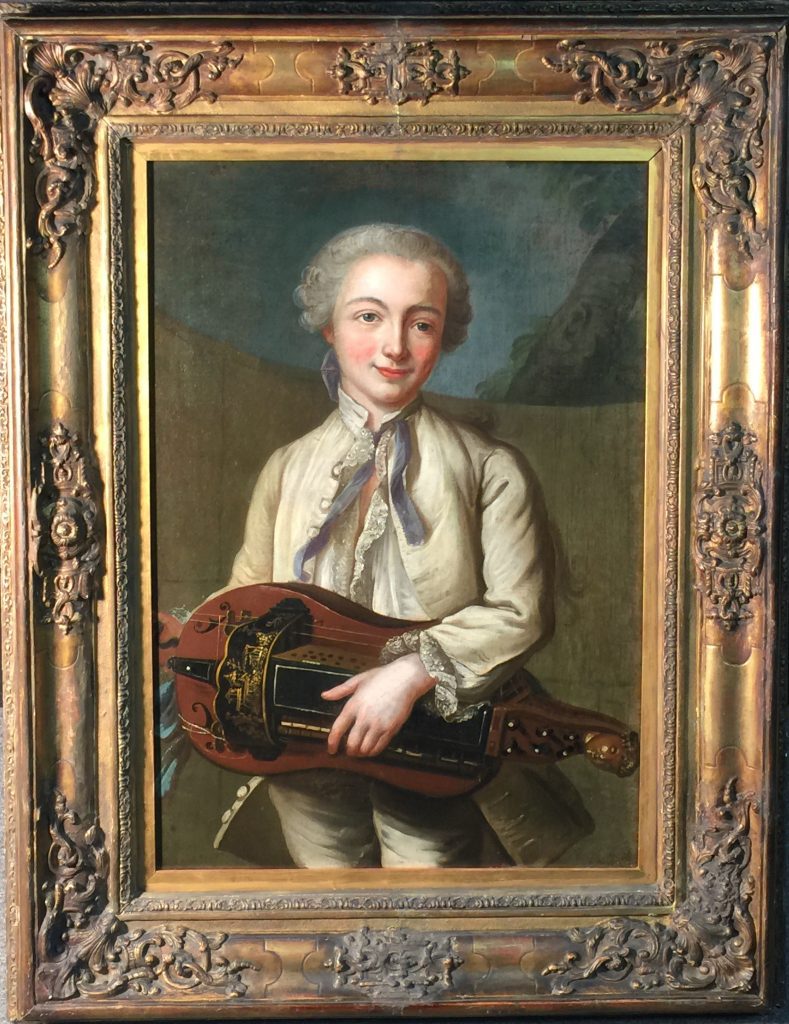Wonder Woman has been busy lately saving the world and now she’s doing art restoration on ancient statues at the Met and saving the world’s heritage too. I’m glad that she sees saving our heritage as an important work worthy of her time and she’s amazing at beating up the bad guys but would you want her “delicate touch” and “trained eye” to restore your artwork?! I don’t recall that education or experience being part of her training on the hidden lost island of Amazon Warrior Women.
Lots of well-intentioned people think that restoring artwork is like “fixing” anything else. Art restorationists with a traditional craftsman background usually have no idea why they use certain materials or do certain techniques other than “that’s the way its always been done.” That’s always been a recipe for disaster. It is common that something horrific usually happens when do-it-your-selfers start restoring historical items (there are standards, guidelines, ethics to follow). Chief culprits are artists who think that because they can paint a painting, they can restore any painting. Their restorations can have severe consequences for the value of the artwork.
These untrained, undisciplined restorers have no idea why works of art fall apart. And, of course, they have no idea as to the aging problems of the materials/supplies they use for restoring. But most importantly, they don’t honor or respect the original creation, historical value or aesthetics, even if they are flawed (in their opinion).
The above photos got viral international internet fame when the painting on the left was restored – the final result is on the right. Yes, this is THE ACTUAL APPEARANCE OF THE artwork AFTER RESTORATION!! You might say, “You’ve GOT to be kidding me!!!” This got a lot of outrage…. and then hilarious parody responses from the public…
Before and After Restoration of Warhol’s Iconic Marilyn
What some people are afraid of if they restore the “Giaconda.”
Artists put their own vibe on other artist’s artwork they restore
This makes me feel like someone stole Christmas.
You may think this is funny!
But the sad thing is that this type of art restoration happens all the time!
We just returned this completed portrait to her family a short time ago…
On the left is the photo of how the painting looked AFTER restoration when it came back from a “professional” Russian restorer in the Los Angeles area not long ago! IT DIDN’T LOOK ANYTHING LIKE THEIR GRANDMOTHER! As you might imagine, the family was crushed, as they thought the original, cherished oil painting of their dear grandmother was damaged beyond repair and lost forever. On the right is our after-restoration photo of the ancestral portrait, AFTER all the previous “restoration” was removed and the original portrait was recuperated. You should have seen the owner’s/family’s faces!
Here’s another sad previous restoration of an exquisite Spanish Colonial painting in the Franciscan archives of California. Even though the restoration looks dark and sad, at least it remotely looks like the original! The photo on the left is the restored, repainted old master. After we cleaned off all the repainting to re-reveal the original, we then properly stabilized deterioration, cleaned the underlying “gunk,” carefully and discretely inpainted only the paint losses, being careful to not slop over onto the original. Conservation grade varnish layers allowed the painting to glow and look its best. The photo on the right of the face shows the final results after conservation. Look how many wonderful details reappeared!!!
Repainting a work of art as an excuse for “restoration” is, of course something that kills the value of the original: Its no longer by the artist, its no longer from the period or age of the original… its killed.
The details of restorations that involve repainting can often be sorted out to a certain degree with analysis.
You may have heard that the Charles Dickens Museum in London was excited to find out that they own an original portrait by an important Victorian artist. The bad news is that it is almost entirely hidden under later overpainting. Heavy overpainting across most of the surface, covers up to 70% of the original including most of the face. The painting is believed to be an attempt to mask the damage caused by an equally disastrous attempt to clean the picture, long before it came to the museum.
The picture has been subjected to extensive tests at the Hamilton Kerr Institute, the conservation department of the Fitzwilliam Museum in Cambridge. X-radiography, ultraviolet visible fluorescence and infrared reflectography (which we do in our lab) were used to see the underlying details better.
For more on IR, click here: https://www.fineartconservationlab.com/research-and-authentication/lost-leonardo-searched-for-with-infrared-its-also-used-to-help-art-collectors-find-lost-signatures-–-a-short-video/
For in on UV, click here: https://www.fineartconservationlab.com/research-and-authentication/analysis-of-art-can-reveal-hidden-details-important-to-authentication-and-value/
Cindy Sughrue, director of the museum, hopes to raise the money for full restoration of the painting. “This has been an interesting process to say the least, and one that has seen us swinging from despair to elation.”
“Anyone could see looking at it that it wasn’t quite right – one conservator commented that she looks more like a southern belle – but until we got the scans back it was hard to say exactly what had happened to it,” Price said. “It’s a great relief to know that most of the original painting is still there and we should be able to recover it.”
Thomas Rebok, Art Conservator in S. Africa: https://www.fine-art-restoration.co.za photographed the removal of one portrait from off of another portrait.
To discuss the value of your painting, call my friend Scot Levitt at Bonhams Auction House in Los Angeles. Tell him Scott Haskins sent you. I promise, he’ll be nice to you! 323 436 5425 scot.levitt@bonhams.com
Art conservation – restoration questions? Call Scott M. Haskins, Oriana Montemurro, Virginia Panizzon – Painting Conservators 805 564 3438 faclartdoc@gmail.com
Art appraisal questions? Call Richard Holgate, Certified Appraiser 805 895 5121
See a tour of Fine Art Conservation Laboratories (CLICK HERE)
Follow us on Facebook. Click on one of these links and be our friend:
http://www.facebook.com/SaveYourStuff
http://www.facebook.com/FineArtConservation
In the news recently: the past restoration work on the painting Salvador Mundi by Leonardo da Vinci was so extensive and poorly done that it was no longer attributed to him. The only way to recoup the value? Remove all the restorations and see what was left by the Master. Photo on left is the painting after the past restorations were removed; photo on right is after the careful and excellent quality recent painting conservation treatments that allowed for the artwork to sell at Christies in Nov. 2017 for $430 million.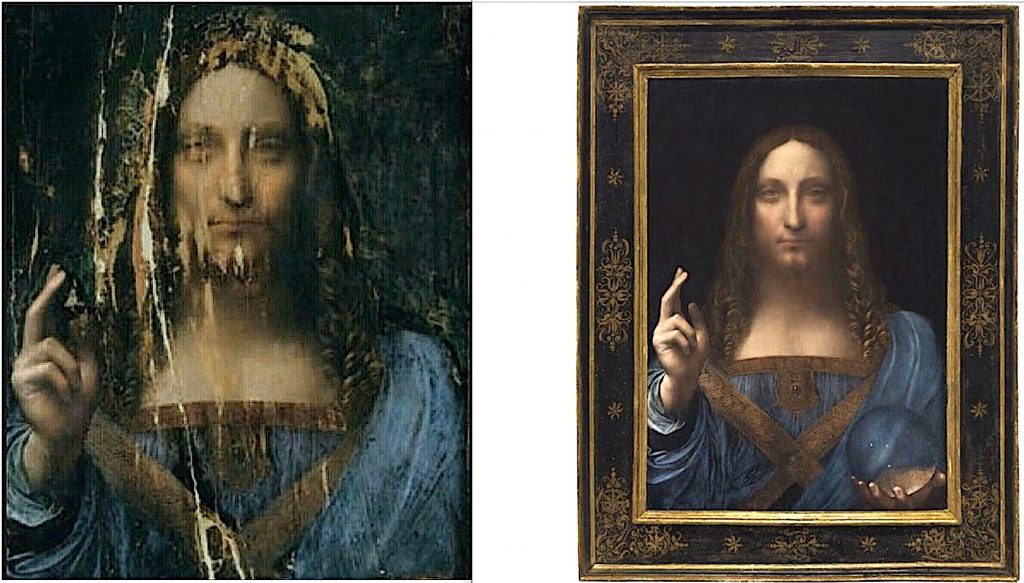
Salvador Mundi by Leonardo da Vinci – Before and After Final Painting Conservation Treatments before the sale
